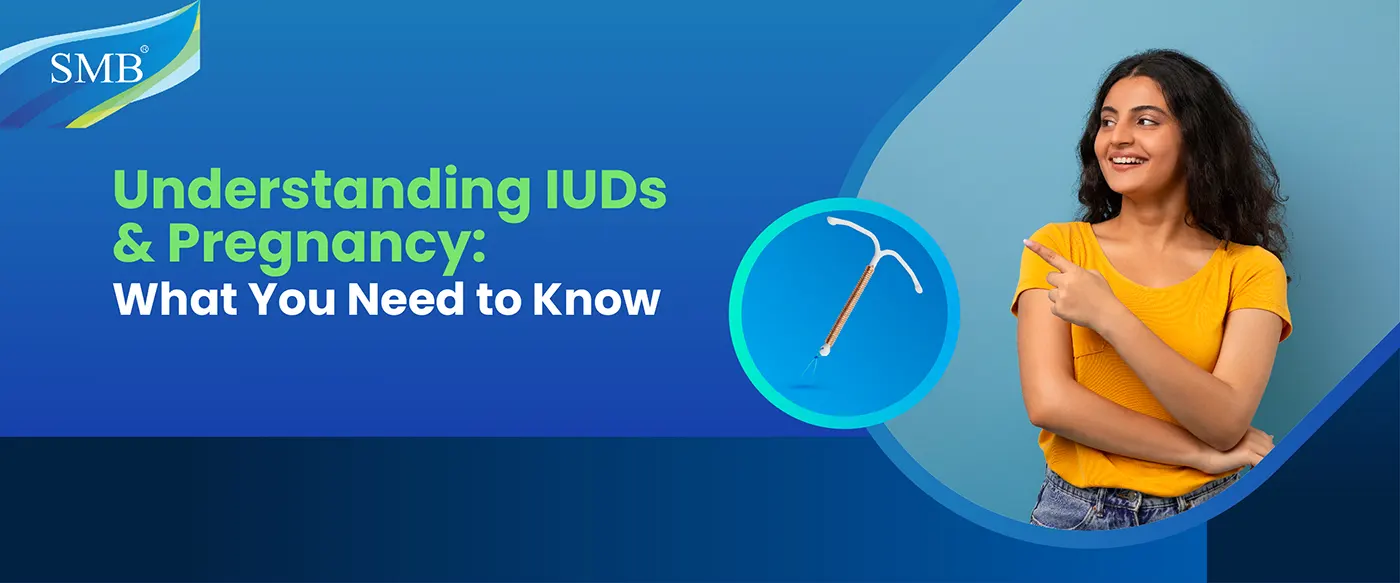What is an IUD?
An IUD is a tiny, T-shaped device that's inserted into the uterus (by a health provider )to prevent pregnancy. There are two types :
- Copper IUDs: They release copper ions, which are toxic to sperm, so they can't reach and fertilize with ova.
- Hormonal IUDs: They release progestin which causes thickening of cervical mucus and stop sperm from getting through.
IUDs are also preferred by some women as they are long term effective and women can use some IUDs for 10 years. IUDs are reversible, and woman can typically become fertile immediately after removal.
Curious about how hormonal and non-hormonal IUDs differ? Explore a detailed comparison here.
IUD Effectiveness
IUDs are one of the most effective methods of birth control , with less than 1% of users experiencing an unintended pregnancy annually. This is more reliable than most other contraceptives. No method is perfect, and it is important to learn about the rare instances of failure.
To learn more about how IUDs work and potential side effects, read our in-depth guide on IUD birth control effectiveness and side effects.
Pregnancy with an IUD: How Does It Happen?
Although unlikely, pregnancy can occur with an IUD in place due to:
- Expulsion: The IUD can get expelled from the uterus either partially or even complete. Expulsion generally happens within the first few months after insertion, particularly during the first three months.
Expulsions are more likely to occur in the immediate postpartum period (within 10 minutes of placental delivery). Expulsion rates are higher in the first few weeks after delivery, with the highest incidence at week 6 for insertions within 0-3 days postpartum. Expulsion may be more likely to occur during a woman's menstrual period particularly if heavy .
- Perforation: In very rare instances, the IUD can perforate the uterine wall most of the times while inserting, making it ineffective besides causing some other complications.
- Incorrect Placement: If the IUD is not properly inserted or shifts out of the uterine cavity, it may not be able to prevent pregnancy.
- IUD Expired: IUDs have a limited lifespan, and using them beyond the recommended time can lead to decreased effectiveness.
- Timing of Insertion: If an egg is fertilized immediately before the IUD is inserted, pregnancy can occur. Hence it is recommended to insert during the first 5-7 days of period. If post partum insertion ,then within 48 hours of delivery or at a 4-6 week .
Follow up visit with health provider and and Self-checks for strings are enough to confirm the presence of the device.
Pregnancy with IUD
Pregnancy with IUD is riskier than other pregnancies :
- Ectopic Pregnancy: It is a condition where a fertilized egg is implanted outside the uterus, often in a fallopian tube. If at all there is a pregnancy with IUD in situ then there is a higher chance it will be ectopic .The risk of ectopic pregnancy with an IUD is still low, but it's important to be aware of the possibility. Early signs of ectopic pregnancy can include pelvic pain, vaginal bleeding, dizziness, and shoulder pain. If these symptoms, it's best to get checked out to rule out ectopic pregnancy. If an ectopic pregnancy is diagnosed, it needs to be treated promptly to prevent serious complications
- Miscarriage and Premature Birth: Pregnancy with an IUD can be associated with increased risks of miscarriage, preterm birth, and other complications. Studies have established that when pregnancy is there and woman wishes to continue ,then removal of the IUD reduces above mentioned risks, although removal per se carries a low risk of miscarriage.
- Infection: Studies have shown that pregnancies conceived with an IUD in place have a higher chance of developing chorioamnionitis, compared to pregnancies without an IUD. The IUD string can potentially leading to an ascending infection from the vagina into the uterus and surrounding membranes (chorion and amnion). There are serious complications for both the mother and the baby, including preterm birth, sepsis, and other adverse outcomes with Chorioamnionitis. Hence recommended to remove the IUD in case pregnancy continuation is desired .
Diagnosing Pregnancy with an IUD
Pregnancy with an IUD is diagnosed using the same symptoms as usual pregnancy:
- Missed periods
- Nausea or vomiting
- Sensitive breasts
- Fatigue
Severe pelvic pain or irregular bleeding, however, could be an indication of an ectopic pregnancy and should be assessed right away.
What to Do If You Suspect You're Pregnant with an IUD
- Take a Pregnancy Test: If you are having pregnancy symptoms, take a home pregnancy test.
- Refer for Advice of a Medical Practitioner: Recommended to contact a a physician at earliest. If pregnancy, ultrasound will be used to determine the viability and location of the pregnancy.
- IUD Removal: In case of pregnancy and palpable strings, removal is usually advised to avoid any complication. If removal is not possible, the pregnancy will have to be monitored closely.
SMB India Corporation's Promise of Safe Contraception
We care about women's well-being most of all in SMB Corporation of India. We are providing quality family planning devices. Our IUD range like SMB Copper T 380A, SMB TCu 380 Plus and SMB TCu 380Ag is all about performance and safety. We also provide IUCD insertion sets and IUCD removal sets so the medical practitioners have tools ready for safe procedures.
Our goods are comprehensively quality-checked and adhere to international requirements, signifying our dedication to reproductive well-being and safety.
Conclusion
Despite IUDs being among the safest contraceptives to be administered, one needs to know about the very rare instances of pregnancy with an IUD. Timely medical care and detection of early symptoms would help minimize risks associated with such pregnancies. SMB Corporation of India remains dedicated to providing safe and secure contraception services for women's choice of health.
If you're considering IUDs, discover 5 essential factors to know before choosing one.
